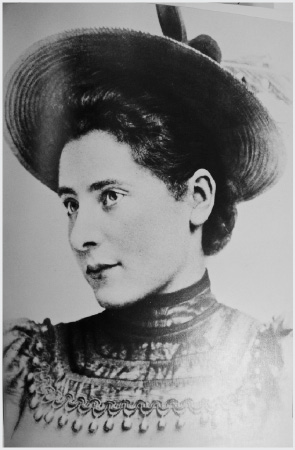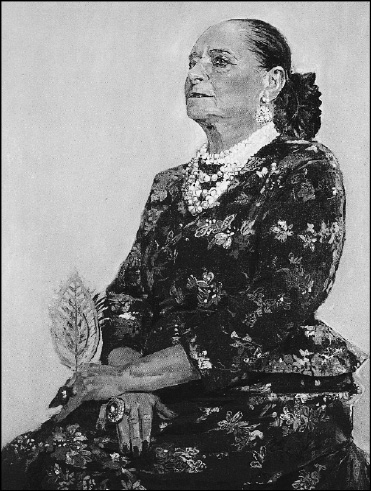Ugly Beauty (15 page)
Authors: Ruth Brandon
Bénouville’s testimony concerned one of those
incidents that now reads like something out of an action movie, but which were
quite commonplace during the dark and dramatic days of the Occupation. One of
Schueller’s Resistance contacts, a man named Max Brusset, notified him that a
delegate of the Provisional Government in Algiers wanted to meet him. The
meeting was to take place at Brusset’s apartment at 28, boulevard Raspail. It
was agreed that Schueller would prepare a report concerning certain questions,
and deliver it Saturday morning. Needing a little longer, he asked to delay the
delivery until Monday morning at eleven. But at nine o’clock Monday, there was a
phone call from Brusset: he had the flu, Schueller shouldn’t come. In fact, at
seven that morning the Gestapo had arrived at the apartment. Brusset’s
sixth-floor bedroom gave onto a terrace, from which he had been able to jump
onto another terrace on the fifth floor and enter the apartment from which he
was now phoning. He was able to contact all save one of the people who had been
due to meet that morning; that one arrived as arranged, carrying incriminating
papers, was arrested, and almost certainly shot. Bénouville knew Brusset, and
had promised him that he would provide an authenticating certificate for this
story when he returned to Paris.
55
The panel
accepted Benouville’s evidence and recommended a
relaxe
.
The hearings for industrial collaboration, however,
which began in 1946 and were not resolved until two years later, had been more
problematic. The panel found that Schueller’s Resistance activities were not
enough to outweigh the evidence that he had collaborated with the Germans. He
had organized lectures in his factories, promised help to men who volunteered to
fight alongside the Germans, funded the MSR, published
La
Révolution de l’économie
with its anti-union tirades, devised the
economic policy of the RNP and encouraged the Relève. The panel did not feel
that the various Resistance activities he had brought to their notice
counterbalanced this, and found him guilty. In addition to disqualifying him
from business, the panel also threatened to forward the evidence to the Court of
Justice, which might have confiscated his assets, sentenced him to national
disgrace, to a prison term, or even to death.
And if Schueller was not guilty of collaboration,
who was? Not only did his name appear in RNP and MSR literature alongside those
of Marcel Déat, who was sentenced to death, and Eugène Deloncle, whom only
assassination saved from a comparable fate, but he had left an indelible trail
in numerous articles, pamphlets, and broadcasts, all urging collaboration; his
book
La Révolution de l’économie
had been published
on the same list as the works of Hitler himself. Acts or motives might remain
cloudy, but the published word was one thing that could not be denied.
Once again, however, Bénouville saved him. Twice—at
the first hearing, and again after the guilty verdict—he sent urgent letters,
stressing his desire to testify on behalf of the accused, visiting the judge and
the Préfet, apologizing when business took him away from Paris at the crucial
moment. Schueller, he insisted, was a victim of his fixation on proportional
salaries, which had led him into various imprudent actions. But he had been of
inestimable help to Bénouville.
56
Bénouville
got his way, and Schueller was let off.
Such solidarity between resisters and collaborators
was not unusual during the
épuration
. As Schueller’s
own activities demonstrated, channels of communication between the two sides had
always remained open. During the Occupation, collaborators often put in a word
for a Resistance figure in trouble. Now those who had been helped, helped in
their turn. Bénouville testified in this way on behalf of many old friends. What
was interesting about his efforts for Schueller, however, was that the two had
met only once, and then briefly (when Schueller, anxious to buy himself onto the
winning side, had promised financial aid when Bénouville needed it). Indeed,
Bénouville insisted that Schueller had never approached him personally for help.
What he had done, he had done for Max Brusset. Even so, it seems surprising that
he should have put quite so much effort into getting Schueller cleared. Why had
he done so?
The answer, like everything else about Schueller,
could be traced back to the life rules he had evolved. The way both Schueller
and Rubinstein conducted their family affairs would be decisive in the
intermingling of their stories. And Bénouville, for Schueller, was family—albeit
that family was a surrogate one, and Bénouville only a tangential member.
[
1
] This
may well have been true. At least in Britain, people ate more
healthfully in wartime, when food was rationed, than they have ever done
since.
[
2
] The
person who selected Oradour as a suitable site for German reprisals was
none other than Jean Filliol, Schueller’s colleague in MSR. In 1943 he
joined the Milice, the dreaded Vichy paramilitary police, and in 1944
was put in charge of the Limoges region, in which Oradour is
situated.
[
3
] Raymond
Berr was managing director of the chemicals firm Kuhlmann, and was
killed in Auschwitz. Hélène died in Bergen-Belsen five days before it
was liberated. She was twenty-three.

HR aged sixteen, before she left Krakow.
Photo: Helena Rubinstein
Foundation

Helena Rubinstein milling parsley in her Saint Cloud
“kitchen,” 1932. Here was where she always felt happiest. Fresh flowers and
herbs were favorite ingredients for beauty creams.
Photo: Helena Rubinstein
Foundation

Madame Rubinstein the scientist: as she liked to see
herself and project herself to the world.
Photo: Helena Rubinstein
Foundation

Helena Rubinstein by Marie Laurencin, 1934. She was
sixty-two years old, but you would never guess it from this portrait, which
showed her as an “Indian Maharanee.”
Photo: Helena Rubinstein
Foundation

Helena Rubinstein with her surviving sisters,
l to r:
Manka, Helena, Stella, and Ceska, 1963.
Photo: Jean-Paul Cadé/Helena
Rubinstein Foundation

Edward Titus, the first Mr. Helena Rubinstein.
Photo: Helena Rubinstein
Foundation

Helena Rubinstein at eighty-six, by Graham
Sutherland. When she first saw this picture, Rubinstein hated it, commenting, “I
never imagined I looked like this.” But after the painting was exhibited and
admired in the Tate Gallery, she changed her opinion: “I had to admit, it’s a
masterpiece.”
Photo: Helena Rubinstein
Foundation

Prince Artchil Gourielli, Rubinstein’s second
husband, on holiday in St. Moritz, 1949. Pleasures like this were one of the
many advantages of being Mr. Helena Rubinstein.
Photo: Helena Rubinstein
Foundation

Patrick O’Higgins, Helena Rubinstein’s goy, leaving
Australia at the end of his and Rubinstein’s 1958 visit.

Eugène Schueller in 1909, the young chemist making
his way in the world. From an insert in the first issue of
Coiffure de Paris.

L’Auréole–the 1905 hairstyle that gave its name to
L’Oréal.
Coiffure de Paris: October
1909
